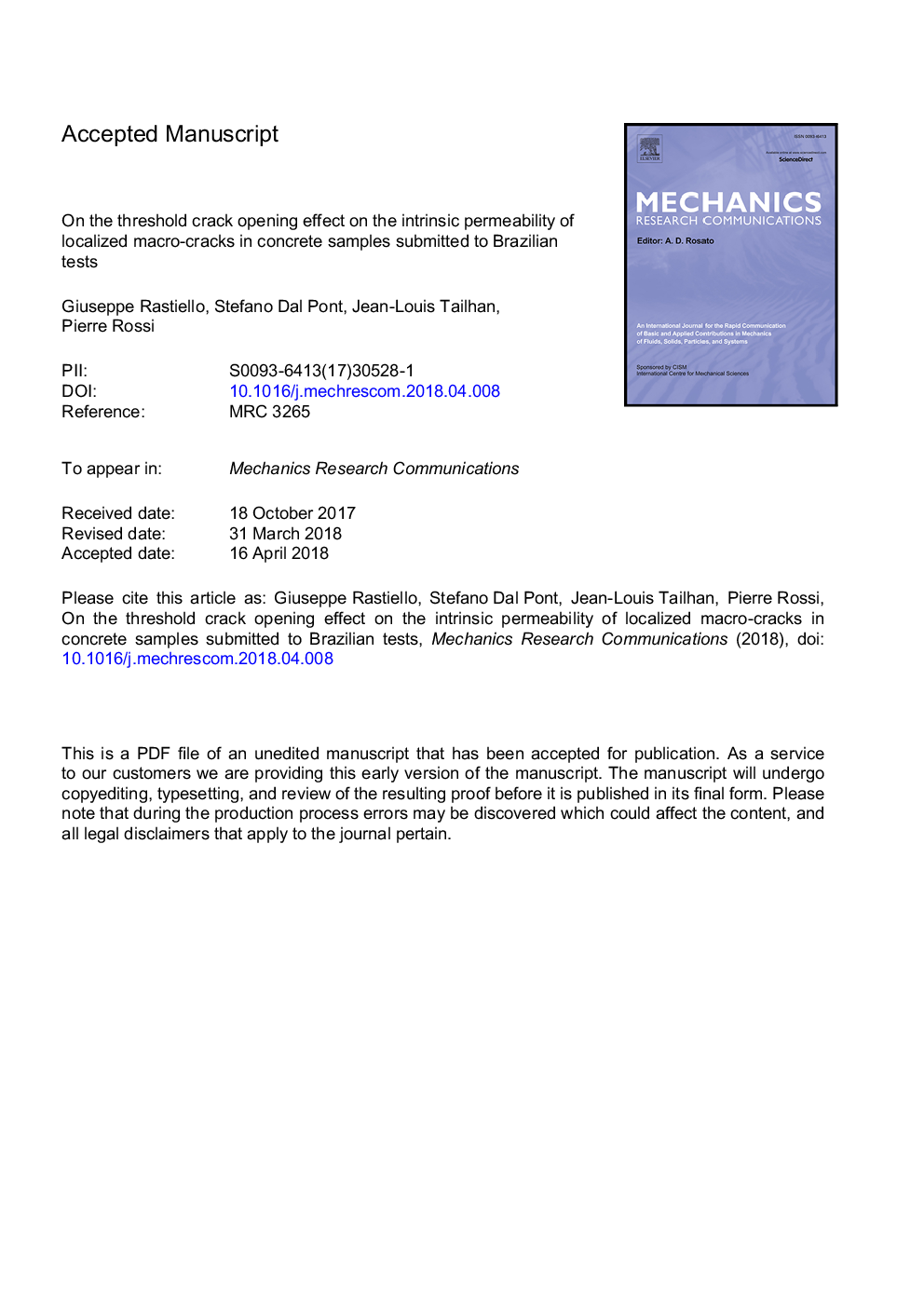| Article ID | Journal | Published Year | Pages | File Type |
|---|---|---|---|---|
| 7178767 | Mechanics Research Communications | 2018 | 11 Pages |
Abstract
The Brazilian (indirect tensile strength) test is widely adopted for studying the permeability evolution of single localized macro-cracks in concrete samples. In most of these studies, the existence of a threshold crack opening effect on the crack permeability is argued, in particular when permeability measurements are performed on previously cracked samples (i.e., on residual cracks). Based on recent experimental results obtained by the authors, the present contribution aims to show that performing permeability measurements in real-time with the crack opening process (i.e., under loading) ensures improving the results quality and makes their interpretation less ambiguous. It is shown that no threshold crack opening effect is detected in the explored range of crack opening displacements. Although presented results do not allow to conclude concerning the existence of such an effect, they point out several critical aspects concerning the interpretations usually provided. In particular, based on the comparison between present and reference results, it is proposed to interpret literature observations as direct consequences of some artifacts inherent to standard experimental procedures, such as the impossibility of distinguishing between crack and porous medium contributions to the measured mass flow rate, crack re-closure due to unloading and/or self-healing phenomena, an inaccurate estimation of the crack apertures corresponding to flow measurements.
Keywords
Related Topics
Physical Sciences and Engineering
Engineering
Mechanical Engineering
Authors
Giuseppe Rastiello, Stefano Dal Pont, Jean-Louis Tailhan, Pierre Rossi,
